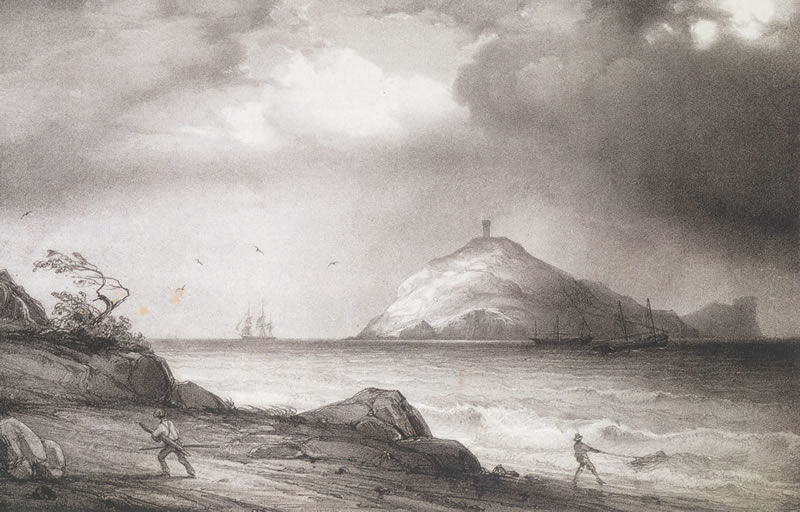From "Ingauni" to "Adelasia"
 Alassio, the town of sunshine, is situated, with its Mediterranean style houses, at the foot of two capes: Capo Mele, for those coming from France and S.Croce for those coming from Genoa. It was already known in Roman times for the Iulia Augusta route that runs at its back.
Alassio, the town of sunshine, is situated, with its Mediterranean style houses, at the foot of two capes: Capo Mele, for those coming from France and S.Croce for those coming from Genoa. It was already known in Roman times for the Iulia Augusta route that runs at its back.
The earliest inhabitants of Alassio’s territory were the Ligurians belonging to the Ingauni tribe, probably refugees from Albenga who had escaped after the victory of the Roman legions. Although there is no sure evidence of the existence of a human settlement at the time of the Roman rule, we can suppose that due to the amenity of the place and the closeness to Albenga’s Municipium, this territory was inhabited.
 During the first millennium after Christ some families living in small hamlets scattered on the hills, might have come down to settle along the shores and found Burgum Alaxi; later they built a small church dedicated to S. Ambrogio, Bishop of Milan in the centre of the new settlement.
During the first millennium after Christ some families living in small hamlets scattered on the hills, might have come down to settle along the shores and found Burgum Alaxi; later they built a small church dedicated to S. Ambrogio, Bishop of Milan in the centre of the new settlement.
It was later annexed to the Republic of Genoa and in 1540 it had its own first “Podestà” and the title of Town.
It was a sea town due to its considerable number of vessels and to the extensive commercial exchanges it had with France, Spain, Portugal, the Netherlands, Sicily and Sardinia, while a large number of boats were used for fishing coral in the waters of the Tirrenean Sea. It was in that period that the Republic of Genoa fell and Alassio became part of Ligurian Democratic Republic .
 Then it came under the French Empire, later, under the Kingdom of Sardinia which became the Kingdom of Italy in 1861.
Then it came under the French Empire, later, under the Kingdom of Sardinia which became the Kingdom of Italy in 1861.
At the end of the 19th century tourism discovered Alassio, due above all to the large English colony led by the Hanburys who greatly contributed to its development with the creation of gardens on the hills and the construction of some typically English buildings. According to the legend, the name of the town came from Adelasia, the daughter of Ottone I of Saxony who was emperor of the Sacred Roman Empire from 936 to 972. She was said to be in love with Aleramo, a young cup-bearer at court and that the Emperor was not at all happy with that. The two lovers escaped to the misty regions of Germany, where, after having married and after many ups and downs came to settle at the foot of mount Tirasso.
Their miserable life as charcoal burners came to an end when the emperor came down to Italy to fight against the Saracens and Aleramo, together with his sons, fought bravely for the imperial army.
Thanks to the the Bishop of Albenga’s good offices, Ottone was reconciled to his daughter and son in law and gave Aleramo and his descendants the marquisates of Acqui, Monferrato, Savoy and others.
Later at the place where Adelasia and Aleramo had settled a new town rose and it was called Alaxia,and later Alassio.
the HISTORY
the CULTURE
Places of Interest
Museums
- Museum of Natural Science c/o Salesian Institute “Madonna degli Angeli”
Winter time:
pre-holiday 17:00 / 19:00;
holiday 9:00 / 12:00
Summer time: (01.07 / 15.09):
tuesday / thursday 21:00 / 23:30; pre-holiday 17:00 / 19:00
Galleries
- Richard West Gallery
at Biblioteca Viale Hanbury - Levi Gallery
at Palazzo Morteo
Libraries
- Public Library "R. Deaglio"
Piazza Airaldi e Durante - English Library
at Biblioteca Viale Hanbury - Library fraz. Moglio
Via Mazzini 12 - Moglio d'Alassio
Archeological sites
- Along the Roman road connecting Alassio to Albenga, we can admire many remains dating from the Roman times as well as an early building of the 9th century, the Church of Sant’Anna ai Monti, finely restored in the 60’s.
Churches
Architectural and Monumental sites
- Tower of Vegliasco
- Remains of the Santa Croce Tower
- Medieval remains near the Sanctuary od the Madonna della Guardia
- Sant’Ambrogio Parish Church
- Madonna del Vento Chapel (16th century façade)
- Saracen Tower (1576)
- English Library (built at the beginning of the 20th century).
Historical characters
- Father Francesco Maria Giancardi: first historian from Alassio. He is the author of (Imprese d’Alassio” in 1653 and he is the historian of most sanctuaries of Liguria. He died in 1970.
- Gerolamo Gastaldi: Secretary of the Republic of Genoa, plenipotentiary Minister, he became famous for his political testament (18th century).
- Luigi Jacopo Grassi: archeologist and historian, he illustrated the bronze tables of the Polcevera (19th century).
- Sergio Quinzio: philosopher, writer, Bible expert; he died on March 22nd, 1995.